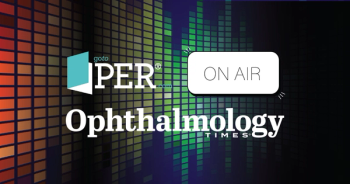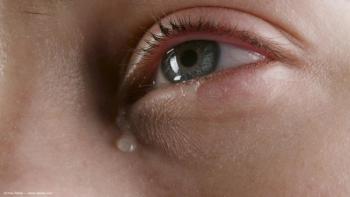
- Ophthalmology Times: September/October 2025
- Volume 50
- Issue 5
Treating myopia today: US-focused treatments, challenges, and global insights
Key Takeaways
- Low-dose atropine and dual-focus spectacle lenses effectively reduce myopic progression, with atropine showing 30%-60% reduction depending on concentration.
- MiSight 1 day contact lenses, FDA-approved for children, demonstrate a 59% reduction in myopic progression over three years.
Emerging pharmacological and optical strategies are shaping a new era.
Pediatric progressive myopia is a growing global public health concern, linked to serious ocular complications including myopic macular degeneration, retinal detachment, glaucoma, and cataracts.1-3 Multiple treatment options exist globally, and US regulatory approvals have only recently expanded.
Surveying the current landscape
Randomized clinical trials support several effective myopia control strategies. Among these is the use of low-dose atropine (0.01%-0.05%), which has been shown to reduce myopic progression by 30% to 60%, depending on the concentration and the formulation.4-6 Dual-focus and defocus spectacle lenses—eg, defocus incorporated multiple segments (DIMS) and highly aspherical lenslets (HALs)—have been shown to slow axial elongation by approximately 30% to 50%.7,8 The MiSight 1 day (CooperVision) is the first FDA-approved contact lens treatment, showing approximately 59% reduction in myopic progression over 3 years.9,10 Orthokeratology (ortho-K) and soft multifocal contact lenses likely provide moderate efficacy (35%-45% reduction in myopic progression). However, ortho-K carries a higher potential risk of microbial keratitis in children.11,12
Additionally, increased time outdoors (40-80 minutes per day) has been shown effective at reducing the onset of myopia in children who are nonmyopic.13-15
Other interventions have not demonstrated clinically meaningful benefit. These include the undercorrection of refractive error; use of blue-light filtering lenses; standard bifocals and progressive addition lenses; pinhole or “training” glasses, and standard soft or rigid gas-permeable lenses. These approaches either lack biological plausibility or have failed in controlled trials.
Low-dose atropine
Low-dose atropine remains the most extensively studied and effective pharmaceutical treatment and can be used in children as young as 3 years. Large trials in Asia, including ATOM2 and LAMP, have demonstrated consistent reduction in both myopic progression and axial elongation.4,5 With the nonpreserved formulation used and population treated in the LAMP trial, 0.05% appeared to be the most effective concentration with acceptable tolerability.5 When low-dose atropine is used in various studies, the labeled concentration (0.05%) does not necessarily capture the clinical effect, which is influenced by formulation-specific factors such as pH, preservatives, and bioavailability.
Atropine also likely delays myopia onset in children who are premyopic although individual response varies by age, ethnicity, and environmental exposure.16,17
Formulation matters
Compounded atropine in the US frequently lacks consistency in drug concentration, pH, and preservative content, raising concerns regarding efficacy, sterility, and patient adherence.18-20
A 2025 ARVO poster by Sydnexis showed superior mydriatic response and corneal penetration in rabbits with BAK-preserved eye drops near physiologic pH compared with preservative-free acidic formulations.21
Current regulatory landscape
Several low-dose atropine products are approved internationally, including the following:
- Australia: Eikance 0.01% (Aspen)
- China: Sinqi 0.01% (SQ-729)
- India: Myatro XL 0.05% (Entod)
- Europe (EMA): Ryjunea 0.01% (Santen); the branded version of SYD-101 (Sydnexis)
In the US, SYD-101 is currently under FDA review with a PDUFA date of October 23, 2025.
Optical interventions
Contact lenses
The MiSight 1 day (CooperVision) remains the only FDA-approved contact lens therapy for myopia control in children aged 8 to 12 years. MiSight has shown sustained reduction in myopic progression (0.67 D) and axial elongation (0.28 mm) over 3 years, with continued benefit through 6 years.9,10 Other soft contact lenses—including extended depth of focus and center-distance multifocal lenses such as NaturalVue (Visioneering Technologies, Inc) and Biofinity (CooperVision)—are commonly used off-label in the US and have shown moderate efficacy in clinical trials.22,23
Ortho-K uses a hard contact lens to temporarily reshape the cornea overnight and has demonstrated a 0.2 to 0.3 mm reduction in axial elongation over 2 years.24-26 Overnight contact lens wear carries a higher potential risk of infectious keratitis in pediatric patients and there are limited data on progression once the lenses are discontinued.11,12 Some smaller studies have shown synergistic effects of low-dose atropine and orthokeratology, though many of these studies are limited by a lack of placebo control.27,28
Spectacle lenses
Spectacle-based myopia control strategies have gained significant international traction, with the following approved in Europe:
- MiyoSmart (HOYA): DIMS29
- Stellest (Essilor): HALs7
- SightGlass Diffusion Optics Technology lenses: Light-scattering technology to reduce retinal contrast30
In the US, on September 25, 2025, the FDA authorized marketing of the Essilor Stellest lenses to correct myopia with or without astigmatism and to slow the progression of the disease in children 6 to 12 years old at the initiation of treatment.31
Behavioral and environmental interventions
Increasing outdoor exposure to 40 to 80 minutes per day is strongly associated with delayed onset and slower progression of myopia. This effect is well documented across several large studies.13-15
In addition, limiting sustained near work, especially at close viewing distances less than 20 cm, and promoting regular breaks from screen time and reading are also likely beneficial.32,33 These strategies are low-cost, low-risk, and should be recommended alongside optical or pharmacologic therapy.
Repeated low-level red light
Among emerging therapies, repeated low-level red light (RLRL) therapy has demonstrated promising early results; however long-term safety remains uncertain. Risks include potential retinal injury and rebound axial elongation after discontinuation.34,35RLRL devices in use across Asia and Australia are not cleared by the FDA, and some may exceed ANSI exposure thresholds.36
Conclusion
Treatment for myopia progression in the US is advancing, with new options such as the MiSight 1 day contact lens and the recently approved Essilor Stellest spectacle lens.
Low-dose atropine, although commonly prescribed off-label, is limited by inconsistencies in its formulation, which can affect both effectiveness and patient adherence. The FDA’s pending review of SYD-101 could mark the beginning of a new era in standardized pharmacologic treatment.
Globally, new developments in spectacle and contact lens technologies add further promise, while behavioral interventions remain an essential part of therapy.
Clinicians must continue to weigh the benefits and risks of off-label strategies while prioritizing early intervention to reduce the lifelong burden of high myopia.
Gregory Ostrow, MD
Ostrow is the director of pediatric ophthalmology at Scripps Clinic and the founder of Sydnexis, a biotechnology company focused on pediatric myopia. He holds multiple patents related to pediatric myopia and ophthalmic formulations, and he regularly lectures and presents on myopia management at national and international conferences. Ostrow also serves as head of corporate relations for the American Association for Pediatric Ophthalmology and Strabismus, where he supports industry collaboration and advances in pediatric ophthalmology.
Laura Kirkeby, CO
Kirkeby is a certified orthoptist and clinical researcher at Scripps Clinic in San Diego, California. She has published and presented extensively in ophthalmology and currently serves as a consultant for Sydnexis on its phase 3 clinical trial evaluating low-dose atropine for myopia. Kirkeby has held executive leadership roles in orthoptic organizations across the US and Canada.
References
Bullimore MA, Brennan NA. Myopia control: why each diopter matters. Optom Vis Sci. 2019;96(6):463-465. doi:10.1097/OPX.0000000000001367
Fricke TR, Jong M, Naidoo KS, et al. Global prevalence of visual impairment associated with myopic macular degeneration and temporal trends from 2000 through 2050: systematic review, meta-analysis and modelling. Br J Ophthalmol. 2018;102(7):855-862. doi:10.1136/bjophthalmol-2017-311266
Haarman AEG, Enthoven CA, Tideman JWL, Tedja MS, Verhoeven VJM, Klaver CCW. The complications of myopia: a review and meta-analysis. Invest Ophthalmol Vis Sci. 2020;61(4):49. doi:10.1167/iovs.61.4.49
Chia A, Chua WH, Cheung YB, et al. Atropine for the treatment of childhood myopia: safety and efficacy of 0.5%, 0.1%, and 0.01% doses (Atropine for the Treatment of Myopia 2). Ophthalmology. 2012;119(2):347-354. doi:10.1016/j.ophtha.2011.07.031
Yam JC, Jiang Y, Tang SM, et al. Low-concentration atropine for myopia progression (LAMP) study: a randomized, double-blinded, placebo-controlled rial of 0.05%, 0.025%, and 0.01% atropine eye drops in myopia control. Ophthalmology. 2019;126(1):113-124. doi:10.1016/j.ophtha.2018.05.029
Puspita I, Rahmah MN, Maharani RN, Patong RY, Kamaruddin MI. Efficacy of atropine eye drops as therapy of progressive myopia in children: a systematic review. J Popul Ther Clin Pharmacol. 2024;31(1):374-381.
Bao J, Huang Y, Li X, et al. Spectacle lenses with aspherical lenslets for myopia control vs single-vision spectacle lenses: a randomized clinical trial. JAMA Ophthalmol. 2022;140(5):472-478. doi:10.1001/jamaophthalmol.2022.0401
Lam CSY, Tang WC, Tse DY, et al. Defocus incorporated multiple segments (DIMS) spectacle lenses slow myopia progression: a 2-year randomised clinical trial. Br J Ophthalmol. 2020;104(3):363-368. doi:10.1136/bjophthalmol-2018-313739
Chamberlain P, Peixoto-de-Matos SC, Logan NS, Ngo C, Jones D, Young G. A 3-year randomized clinical trial of MiSight lenses for myopia control. Optom Vis Sci. 2019;96(8):556-567. doi:10.1097/OPX.0000000000001410
Chamberlain P, Bradley A, Arumugam B, et al. Long-term effect of dual-focus contact lenses on myopia progression in children: a 6-year multicenter clinical trial. Optom Vis Sci. 2022;99(3):204-212. doi:10.1097/OPX.0000000000001873
Bullimore MA, Johnson LA. Overnight orthokeratology. Cont Lens Anterior Eye. 2020;43(4):322-332. doi:10.1016/j.clae.2020.03.018
Kam KW, Yung W, Li GKH, Chen LJ, Young AL. Infectious keratitis and orthokeratology lens use: a systematic review. Infection. 2017;45(6):727-735. doi:10.1007/s15010-017-1023-2
He X, Sankaridurg P, Wang J, et al. Time outdoors in reducing myopia: a school-based cluster randomized trial with objective monitoring of outdoor time and light intensity. Ophthalmology. 2022;129(11):1245-1254. doi:10.1016/j.ophtha.2022.06.024
Jin JX, Hua WJ, Jiang X, et al. Effect of outdoor activity on myopia onset and progression in school-aged children in northeast China: the Sujiatun Eye Care Study. BMC Ophthalmol. 2015;15:73. Published 2015 Jul 9. doi:10.1186/s12886-015-0052-9
Wu PC, Tsai CL, Wu HL, Yang YH, Kuo HK. Outdoor activity during class recess reduces myopia onset and progression in school children. Ophthalmology. 2013;120(5):1080-1085. doi:10.1016/j.ophtha.2012.11.009
Fang PC, Chung MY, Yu HJ, Wu PC. Prevention of myopia onset with 0.025% atropine in premyopic children. J Ocul Pharmacol Ther. 2010;26(4):341-345. doi:10.1089/jop.2009.0135
Wang W, Zhang F, Yu S, et al. Prevention of myopia shift and myopia onset using 0.01% atropine in premyopic children—a prospective, randomized, double-masked, and crossover trial. Eur J Pediatr. 2023;182(6):2597-2606. doi:10.1007/s00431-023-04921-5
Iribarren R, Cunha C, Kaymak H, Grzybowski A. Preservatives and pH in low-dose atropine formulations for clinical trials. Acta Ophthalmol. 2024;102(3):364-366. doi:10.1111/aos.16604
Mughal S, Sakina SK. Artificial tears: promising treatment or silent threat to public health? Health Sci Rep. 2023;6(8):e1508. doi:10.1002/hsr2.1508
Richdale K, Wagner H, Zadnik K. What’s in the bottle? Variability in compounded atropine formulations for myopia. JAMA Ophthalmol. 2023;141(1):22–30.
Murphy T, Gieschen L, Baker D, et al. Effects of pH and BAK in low dose atropine on pupil dilation in Dutch Belted rabbits. Poster presented at: Association for Research in Vision and Ophthalmology 2025 Annual Meeting; May 4–8, 2025; Salt Lake City, UT.
Tuan K-MA. A randomized controlled trial for myopia progression control using catenary power profile contact lenses: 12-month effectiveness and safety. Invest Ophthalmol Vis Sci. 2024;65:2697–2697.
Walline JJ, Walker MK, Mutti DO, et al. Effect of high add power, medium add power, or single-vision contact lenses on myopia progression in children: the BLINK randomized clinical trial. JAMA. 2020;324(6):571-580. doi:10.1001/jama.2020.10834
Jakobsen TM, Møller F. Control of myopia using orthokeratology lenses in Scandinavian children aged 6 to 12 years. Eighteen-month data from the Danish randomized study: Clinical study of near-sightedness; treatment with orthokeratology lenses (CONTROL study). Acta Ophthalmol. 2022;100(2):175-182. doi:10.1111/aos.14911
Sun Y, Xu F, Zhang T, et al. Orthokeratology to control myopia progression: a meta-analysis. PLoS One. 2015;10(4):e0124535. doi:10.1371/journal.pone.0124535
Cho P, Cheung SW. Retardation of myopia in Orthokeratology (ROMIO) study: a 2-year randomized clinical trial. Invest Ophthalmol Vis Sci. 2012;53(11):7077-7085. Published 2012 Oct 11. doi:10.1167/iovs.12-10565
Tan Q, Ng AL, Cheng GP, Woo VC, Cho P. Combined 0.01% atropine with orthokeratology in childhood myopia control (AOK) study: A 2-year randomized clinical trial. Cont Lens Anterior Eye. 2023;46(1):101723. doi:10.1016/j.clae.2022.101723
Yu S, Du L, Ji N, et al. Combination of orthokeratology lens with 0.01% atropine in slowing axial elongation in children with myopia: a randomized double-blinded clinical trial. BMC Ophthalmol. 2022;22(1):438. doi:10.1186/s12886-022-02635-0
Lam CSY, Tang WC, Tse DY, et al. Defocus incorporated multiple segments (DIMS) spectacle lenses slow myopia progression: a 2-year randomised clinical trial. Br J Ophthalmol. 2020;104(3):363-368. doi:10.1136/bjophthalmol-2018-313739
Rappon J, Chung C, Young G, et al. Control of myopia using diffusion optics spectacle lenses: 12-month results of a randomised controlled, efficacy and safety study (CYPRESS). Br J Ophthalmol. 2023;107(11):1709-1715. doi:10.1136/bjo-2021-321005
FDA authorizes marketing of first eyeglass lenses to slow progression of pediatric myopia. News release. FDA. September 25, 2025. Accessed September 29, 2025.
https://www.fda.gov/news-events/press-announcements/fda-authorizes-marketing-first-eyeglass-lenses-slow-progression-pediatric-myopia Huang HM, Chang DS, Wu PC. The association between near ork activities and myopia in children—a systematic review and meta-analysis. PLoS One. 2015;10(10):e0140419. doi:10.1371/journal.pone.0140419
Ku PW, Steptoe A, Lai YJ, et al. The associations between near visual activity and incident myopia in children: a nationwide 4-year follow-up Study. Ophthalmology. 2019;126(2):214-220. doi:10.1016/j.ophtha.2018.05.010
Jiang Y, Zhu Z, Tan X, et al. Effect of repeated low-level red-light therapy for myopia control in children: a multicenter randomized controlled trial. Ophthalmology. 2022;129(5):509-519. doi:10.1016/j.ophtha.2021.11.023
Liu H, Yang Y, Guo J, Peng J, Zhao P. Retinal damage after repeated low-level red-light laser exposure. JAMA Ophthalmol. 2023;141(7):693-695. doi:10.1001/jamaophthalmol.2023.1548
Ostrin LA, Schill AW. Red light instruments for myopia exceed safety limits. Ophthalmic Physiol Opt. 2024;44(2):241-248. doi:10.1111/opo.13272
Articles in this issue
about 2 months ago
Transformative advances in vision research: It’s the scienceabout 2 months ago
Anti-VEGF innovations in retinal disease: From molecules to medicineabout 2 months ago
From numbers to meaning: Graphical reporting in refractive surgeryNewsletter
Don’t miss out—get Ophthalmology Times updates on the latest clinical advancements and expert interviews, straight to your inbox.












































